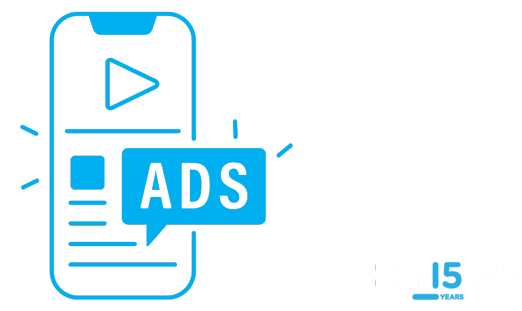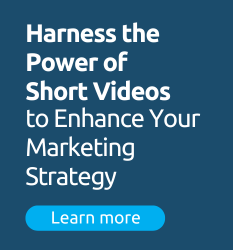As of June 2018, Instagram has over 1 billion monthly active users. In the last year alone, over 300 million people have joined, close to the total numbers of close rivals Snapchat and Twitter. For a site that is less than 10 years old, the social network’s growth has been simply phenomenal—creating many opportunities for Instagram advertising for schools.
What’s more, Instagram’s user base is young, international, and often very willing to engage with brands online, making it ideal for education institutions looking to increase their social media engagement. In addition to maintaining a regular presence on the site, advertising on the platform can be an extremely effective way to reach this highly coveted online audience.
While Instagram ads can be created in conjunction with Facebook campaigns through Facebook Ads Manager, it can be worth considering your campaign strategy on the site in isolation from its parent company. Here’s a quick overview of the unique aspects of advertising on Instagram.
Advantages and Disadvantages of Instagram Advertising for Schools
It’s important to note that as Instagram’s popularity has grown, its audience has become more diverse. While the vast majority of the site’s visitors are still under 35, around 28 percent now fall into older age brackets, with healthy numbers across several age groups:
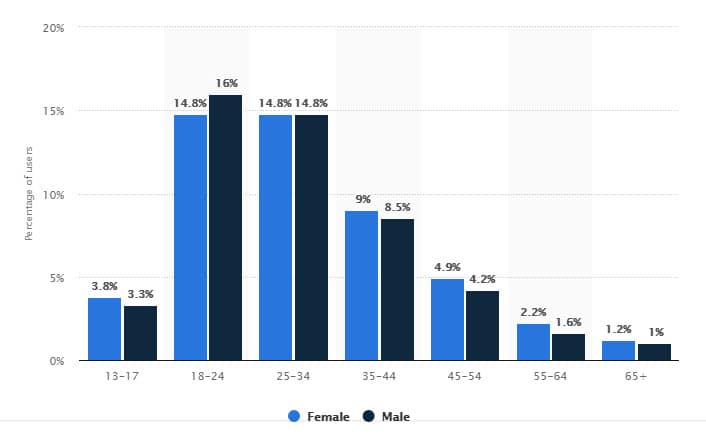
This means that even schools targeting older students can get plenty of joy through Instagram ads, while the site’s fairly even male/female split means that you will be likely to find an audience for whatever specific programs you are looking to promote.
Instagram also enjoys excellent penetration across a number of different markets and regions across the world, including top education hubs like the UK, Australia, and the USA, and key international student markets like Malaysia, Hong Kong, and Turkey:
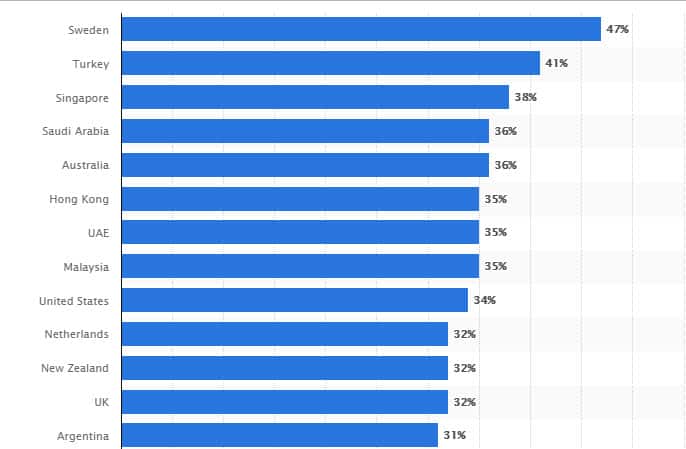
Statistics have also suggested that Instagram audiences are very brand-friendly. The site’s own research claims that ad recall among its users is an average of 2.8 times higher than other social media platforms, while an independent study conducted by marketing company Zine found that 80% of respondents considered Instagram to be the primary social platform they used for brand collaboration:
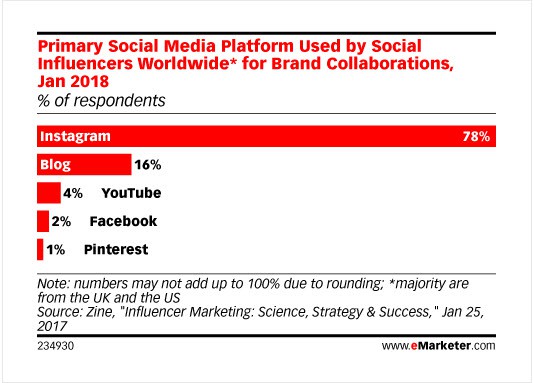
On the downside, Instagram’s growth has been something of a double-edged sword for schools. While early adopters found great success on the site, its increasing popularity has created a lot more competition for user attention and engagement. While your ads might be shown to the audience you want, the sheer volume of other posts competing for their attention can make it easy to get lost in the shuffle.
Another negative about Instagram advertising for schools is their cost. Schools will notice that the average bid required to place an ad on Instagram is generally significantly higher than on Facebook, and institutions with restrictive budgets may need to limit their placement on the site to ensure their campaigns are cost-effective.
Instagram Feed Ads: What Formats are Available for Schools?
Schools looking to advertise in Instagram feeds can do so in four different formats, all of which can be created through Facebook Ads Manager. While the ad types supported on Instagram are also all available on Facebook, there are a number of differences in the technical specifications allowed on each site which you should be mindful of, particularly if you are looking to run the same ad set on both platforms. Here’s a brief overview of what is available on Instagram, and how the formats differ from Facebook:
Single Image and Video Ads When Considering Instagram Advertising for Schools
Single image and video ads are considered to be some of the most straightforward options when considering Instagram advertising for schools – containing either an image, video, or gif file. While the image specs are the same for both Facebook and Instagram, the maximum length of videos on the latter is much shorter. In fact, videos can be no more than 60 seconds long on Instagram, whereas Facebook allows up to 120 minutes.
Both image and video ads are capable of achieving great results on Instagram depending on which is a more suitable option for your needs. Schools looking to create videos should work to ensure that their clips are professional and high quality, as Instagram users are accustomed to visually appealing work. It may also be worth including captions in your videos, as many users will view ads on the site with the sound turned off.
Example: A sample snapshot of a video ad for Geneva Business School.

Both image and video ads can include a CTA linking to your website, a landing page, or a social media page, and you can choose from a list of predetermined options, including Apply Now, Contact Us, and Call Now, all of which could be useful for your school’s objectives. It should be noted, however, that image ads support a few more options than videos, including a Get Directions CTA, which might be useful for an institution looking to target local prospects or advertise an event like an open house or tour.
Carousel and Slideshow Ads
If you’re looking to really make your Instagram ads for enrollment stand out, the mixed media formats Instagram offers might be your best bet. The popular Carousel format allows you to select two or more different images or videos and assemble them into a scrollable slideshow within the same ad. Each video can be up to 60 seconds in length, and it is possible to combine photos and video within the same carousel.
This format can be especially useful for schools looking to promote multiple course options in a single ad, or just showcase different sides of their school. Keep in mind though, that you can only select one CTA which will appear on each card.
Example: This sample Carousel Ad was developed by the University of Rhode Island for its fall recruitment campaign in 2016. Note how they strive to make each slide different, offering something new for prospective students every time.

Slideshow Ads, meanwhile, allow you to combine up to 10 images into a video montage, and set it to music. Keep in mind, though, that you must have the necessary rights to use any copyrighted material, although Facebook Ads Manager does provide a selection of licensed background music you can use. A slideshow can be also incorporated into a Carousel Ad as a single video, giving your school even more creative possibilities.
All Instagram ad formats offer the option of including text under your image or video. This can be up to 2,200 characters long, although it’s worth bearing in mind that the limit for Facebook ads is only 125 characters, meaning you will need to keep within that if you want the option of running the same ad on both sites.
It’s also important to remember that the Headline and Link Description text which appear in Facebook ads do not apply to Instagram. Even though you will be prompted to fill them in when creating your ad, they will not be displayed on the site, meaning it’s important to ensure your description text includes all the necessary information you want to convey.
Example: A Facebook Ad for Discovery Community College with the headline and link description highlighted. These elements do not appear in Instagram ads.

Interested in building your social media strategy? Connect with our team for custom-tailored insights that can help you level-up your Instagram advertising efforts.
Why Stories Ads Should be a Part of Your School’s Instagram Marketing Strategy
Since its introduction in mid-2016, the Stories feature has become an integral part of Instagram advertising for schools. The bite-sized, ephemeral highlight reels of photo, video, and text content now command the attention of over 400 million daily users, playing a huge role in the site’s growth.
However, while many schools make use of Stories, the potential for Stories Ads, which were introduced in March 2017, is still somewhat unexplored in the sector. Stories Ads play in between ordinary Stories when they are being viewed, and are available in both video and photo formats. Videos can last up to 15 seconds, while images will appear on screen for up to 5 seconds. Both formats can include a CTA. Here is an example of what a video Stories Ad looks like:

Recently, the site also introduced its Carousel format to the feature. Carousel ads allow for up to 3 cards, which can be either images or video. Each card will play for 5 to 15 seconds depending on its format. Like ordinary Carousel Ads, only one CTA can be used throughout the entire ad.
When creating Stories ads, it’s important to try and match the aesthetic users have come to expect from the feature. Ordinary Instagram Stories tend to be more candid and less polished than other posts on the site, and use images that often incorporate text, filters and graphics. Since Instagram ads for schools will be playing in between other Stories, it’s best to make sure yours blends in. If you’re already using the feature for posts, adapting some of your more successful Stories into ads might be a good place to start.
Example: This Story from Duke University promoting summer dance classes is the kind of content that could serve as a good basis for a Stories Ad.

Having said that, it should be noted that the text, filter and effect options available for ordinary Instagram Stories are not accessible through Ads Manager, so you will need to put them in place manually prior to uploading your ad file.
The unique advantage offered by advertising through Instagram Stories over the site’s other options is how immersive the format is. When played, a Stories Ad occupies the full screen of a device, with no other distractions to divert the user’s attention away from your offer.
This has the potential to drastically increase your chances of enticing prospects to convert. An independent experiment conducted by social media marketing company Agora Pulse showed that stories ads had a 23% higher conversion rate than the site’s Feed ads:
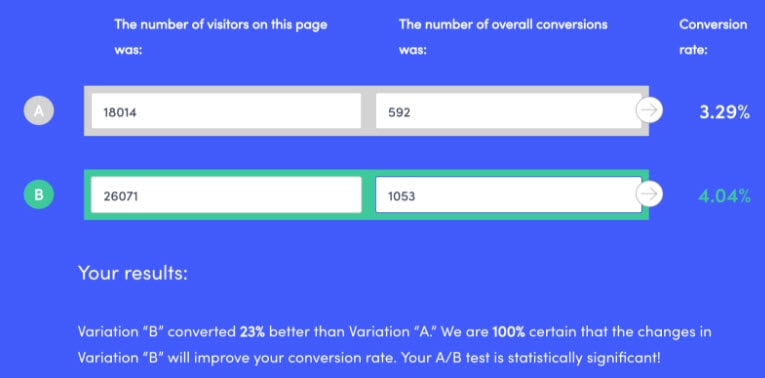
Surprisingly, Stories Ads were also shown to be somewhat cheaper, and reached 44% more users. These kind of metrics show that the format has plenty of promise for schools.
The downside is that the ads can be skipped by users, meaning schools need to work hard to capture and retain their attention. A Stories Ad also cannot be retrieved or recalled after it has been played, which means that prospective students do not have the option to return to your ad and convert later.
How much value Stories ads have for your school will depend largely on the audience it serves. More than half of Instagram Stories users are in the 18-29 age range, meaning schools targeting younger audiences are more likely to see good results. Users are also 68% female, which may have an impact on your targeting efforts.
Choosing the Right Targeting and Campaign Options for Your Ads
One of the biggest advantages of Instagram being owned by Facebook is that it means advertisers on the platform have access to Facebook Ads Manager’s full range of targeting options, which are arguably the most comprehensive on the web. Using the vast amounts of information gathered about users on both platforms, Ads Manager allows you to accurately target campaigns based on:
- Location (by region, country, state, city, postal code or address)
- Age
- Gender
- Languages
- Demographics (including education, employment, and lifestyle)
- Interests (based on activities on Facebook and Instagram)
- Behaviours (including device usage, purchasing habits, and travel)
- Connections
You can also use the Custom Audiences tool to create remarketing campaigns on the platform, and Lookalike Audiences to replicate the success of previous campaigns. Your Instagram ads can also be used for a wide range of different objectives, including lead generation and conversions, as well as more awareness-focused campaigns to increase reach, brand awareness, web traffic, social engagement and video views. It should be noted, however, that advertisers using Stories Ads have a slightly more limited range of objectives to choose from, with only five currently available – Reach, Traffic, Conversions, Video Views, and App Installs.
When selecting where your ads will be shown, you can choose either to select their placement manually, or to have Ads Manager automatically select your placement:

The automatic placement option will show your ads where Facebook estimates they are likely to perform best, including Instagram, Facebook, and other apps such as Messenger. This may be less than optimal if you are specifically looking to increase your visibility on Instagram, but has been shown to get very good results. Dividing your ads across platforms can also help to mitigate the slightly higher cost of advertising on Instagram, allowing you to make more of your budget. However, it is not an option for Stories Ads, which need to be selected manually.
Measuring the Success of Your School’s Instagram Ad Campaigns
Like all of your digital marketing initiatives, the key to achieving success with ads is to continuously monitor your campaigns and optimize them for maximum performance. Facebook Ads Manager’s reporting tools offer a range of helpful metrics that will give you actionable insights for this process, including data on your ad cost, reach, and performance in relation to your targeted objectives for individual ads, ad sets, and overall campaigns. Using these KPIs, you can work to continuously adjust your budget, placements, and creative in order to improve performance.
With the platform’s user base increasing and organic reach harder and harder to achieve, advertising is becoming an increasingly essential component of Instagram advertising for schools. By following the guidelines set out in this piece, and keeping in mind the unique needs of your school and its online audience, your school will be on the right track to doing it properly.


